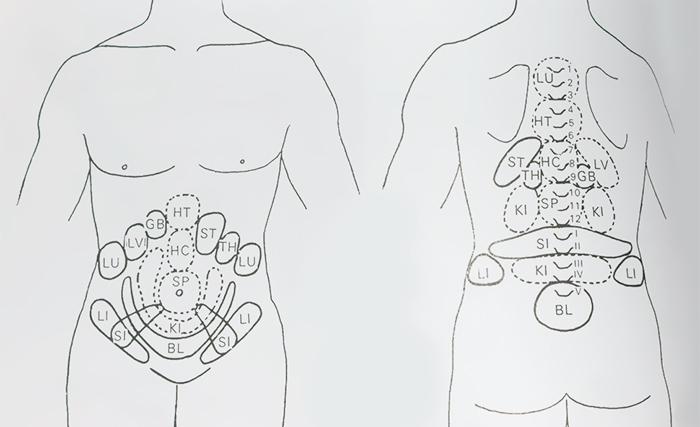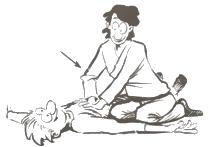Shiatsu Massage, Vancouver. Ancient Japanese preventative and rehabilitative therapy

People of all ages, including infants and children, experience lasting, beneficial results from therapeutic shiatsu massage. From a Western point of view, acupressure stimulates the healing, conserving functions of the parasympathetic branch of the nervous system to calm the body's overactive "fight-or-flight" response.
The shiatsu therapist treats the whole body as well as the specific problem areas. This gives the body the space and time to heal itself and restore normal functioning. Shiatsu massage is an important part of a preventative or rehabilitative health care program.

Shiatsu can help alleviate a wide range of chronic conditions including:
- Headaches/migraines
- Back pain
- Neck and shoulder pain
- Sciatica
- Whiplash
- Carpal tunnel syndrome
- Thoracic outlet syndrome
- Repetitive strain injuries
- Muscle tension and spasm
- Insomnia
- Constipation
- Digestive problems
- Menstrual problems
- Chronic fatigue syndrome
- Fibromyalgia
- Arthritis
- Asthma
- Anxiety and depression
- Sports injuries
What is The Hara - also called Ampuku Diagnosis?
In one of my favorite books about Do-it-Yourself Shiatsu, the author Wataru Ohashi, describes how in the old days Oriental people did not have x-rays and machines to view the inner working of the body. The only equipment they used to discover what was happening in the abdomen was the palm and fingers. All diagnosis was done through touch.
Hara is the center of all energy (known as Ki in Japanese and Chi in Chinese), it is the barometer for the rest of the body and the state of health. In Japan everyone is aware of the importance of the Hara. The Japanese language, with its idiomatic expressions use it to express this attitude; for example Hara guroi: literally translates as "dirty hara" meaning cunning, sneaky or dishonest person or Hara tateru: "upset hara" describes an angry or upset person.
People pay little or no attention to this most important center of energy production. When we experience anxiety or feeling really anxious, tension is accumulating in the abdomen area. Relaxing softens the Hara and simultaneously relieves the emotional condition that caused it to become so tense to begin with.
A qualified Shiatsu practitioner/therapist has skillful hands to detect and release tension from the Hara as well as the corresponding meridians. It is done through loose comfortable clothing. For general diagnosis of the internal Hara we place a relaxed hand on the abdomen and move it around gently. What we are looking for is stiffness and resistance in the heart, heart constrictor (protector) stomach, spleen, liver, gallbladder, lung, bladder, small intestine and large intestine reflex points. Each of these will feel different from the other and between finding the most restricted and relaxed reflex points your therapist will work towards either tonifying or sedating the reflex points. Aside from re-balancing the meridian system, it actually helps with eliminating constipation when performed on regular basis. It is said before many times that "massaging one's abdomen is the secret to longevity."
Hara diagnosis/treatment is so relaxing and refreshing, that it has always been one of the favorite part of clients my clients shiatsu treatments!
What should I expect from a Shiatsu massage?
Typically, a Shiatsu treatment lasts between one hour to two hours. In meridian style shiatsu, treatments are traditionally done on a floor mat, and clients usually wear loose fitting clothing. A Shiatsu therapist applies comfortable pressure to all parts of the client's body with hands and thumbs, elbows, knees and even feet. The degree of pressure is adjusted to the comfort level of each client.
In a traditional Shiatsu massage, you are fully clothed and no massage oil is applied. However, therapist whom are trained in multidisciplinary skills, offer Shiatsu on a massage table as well. In this case pressure is applied through the top of the sheet and proper draping techniques ensure that your body is fully covered.
A qualified Shiatsu therapist has completed an accredited diploma program. In Canada a diploma course requires between 900 to 2200 hours of training that includes extensive study of both Eastern and Western sciences.
The Origin of Shiatsu
Shiatsu therapy is holistic. Oriental medicine sees the human being as inseparable, one, without divisions between mind, body, and soul. The word shiatsu literally translates as "finger-pressure". However, shiatsu is more than just a way to apply physical pressure to various points of the body. It goes far beyond that to involve total communication between therapist and client.
Though the East and West seem to have little in common, both describe the wonder of life and the human body. Eastern medicine has accumulated knowledge and wisdom about the human body, just as Western medicine has. Eastern medical theory The 'sunlight ' vessel of the stomach showing 48 acupuncture spots describes health as a dynamic balance of body, mind, and spirit. Meridian style shiatsu is deeply rooted in ancient Oriental medical practices that are over 5,000 years old.
Disease in traditional Oriental medicine is the result of imbalance of the life energy, "chi" or "ki". This energy is believed to travel through the body along pathways called "meridians". The shiatsu therapist aims to unblock the flow of energy, to bring the client's body back into balance and help the client regain the natural ability to maintain equilibrium or wellness. This relieves symptoms and, as function improves, the client regains a feeling of vitality.
